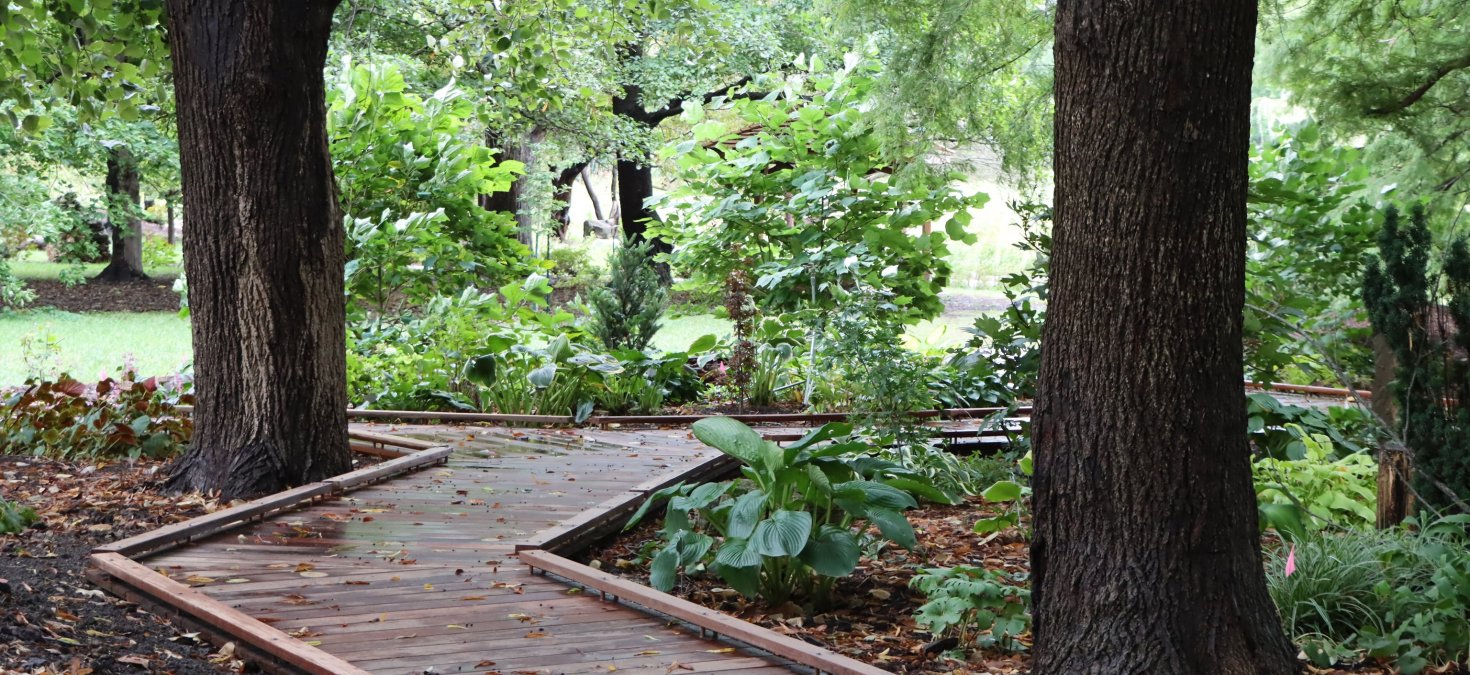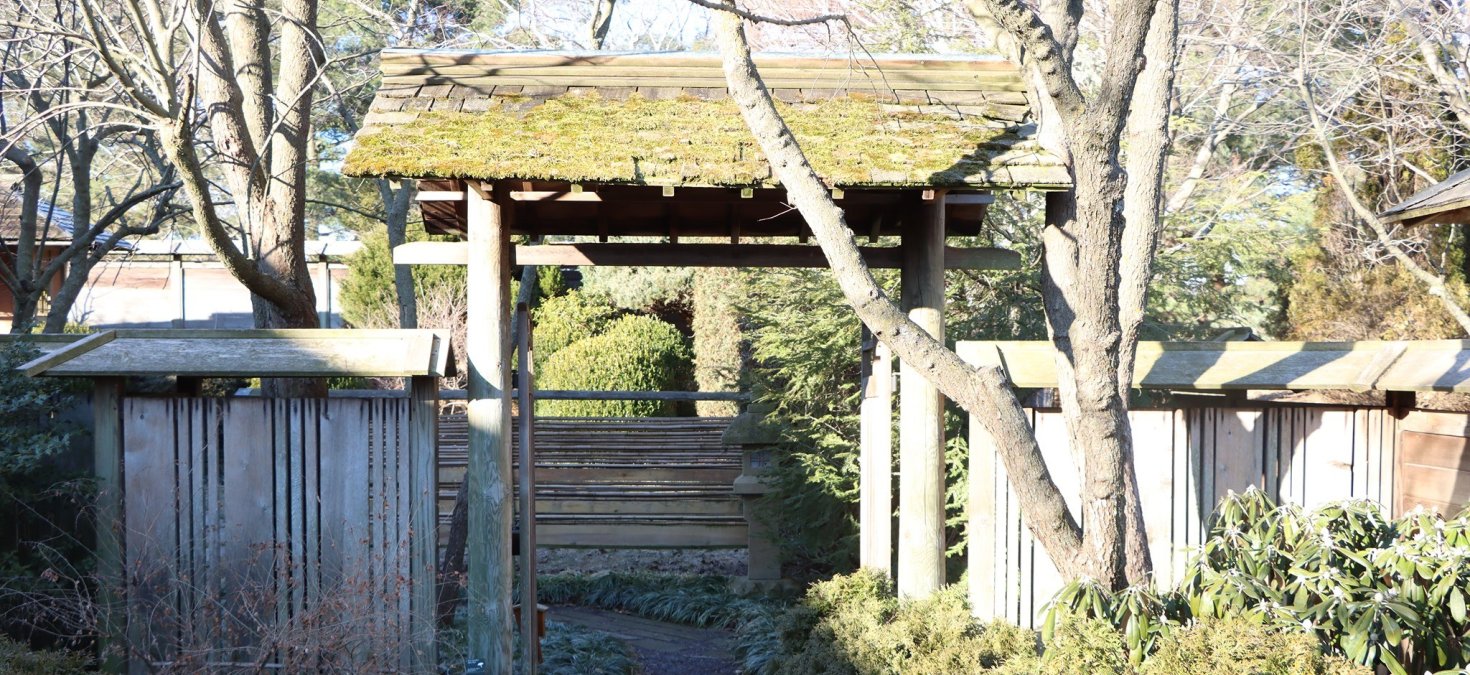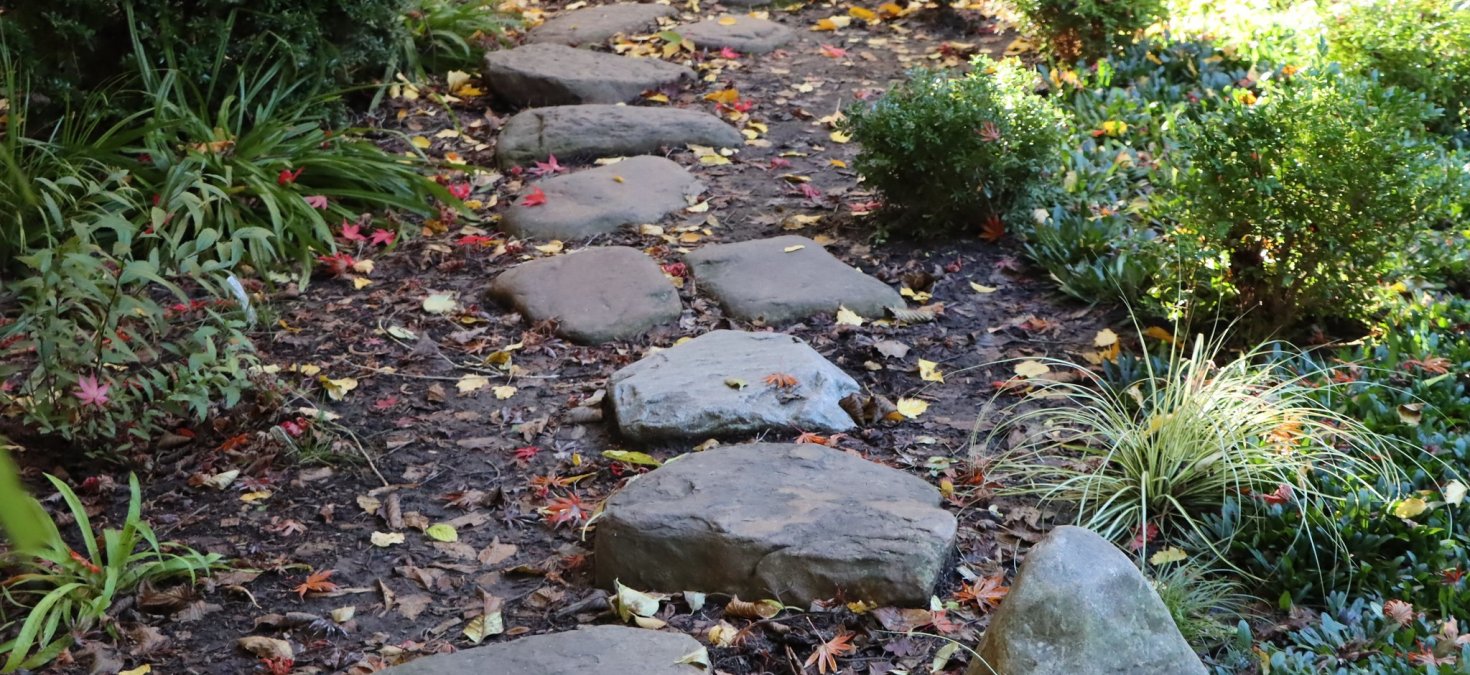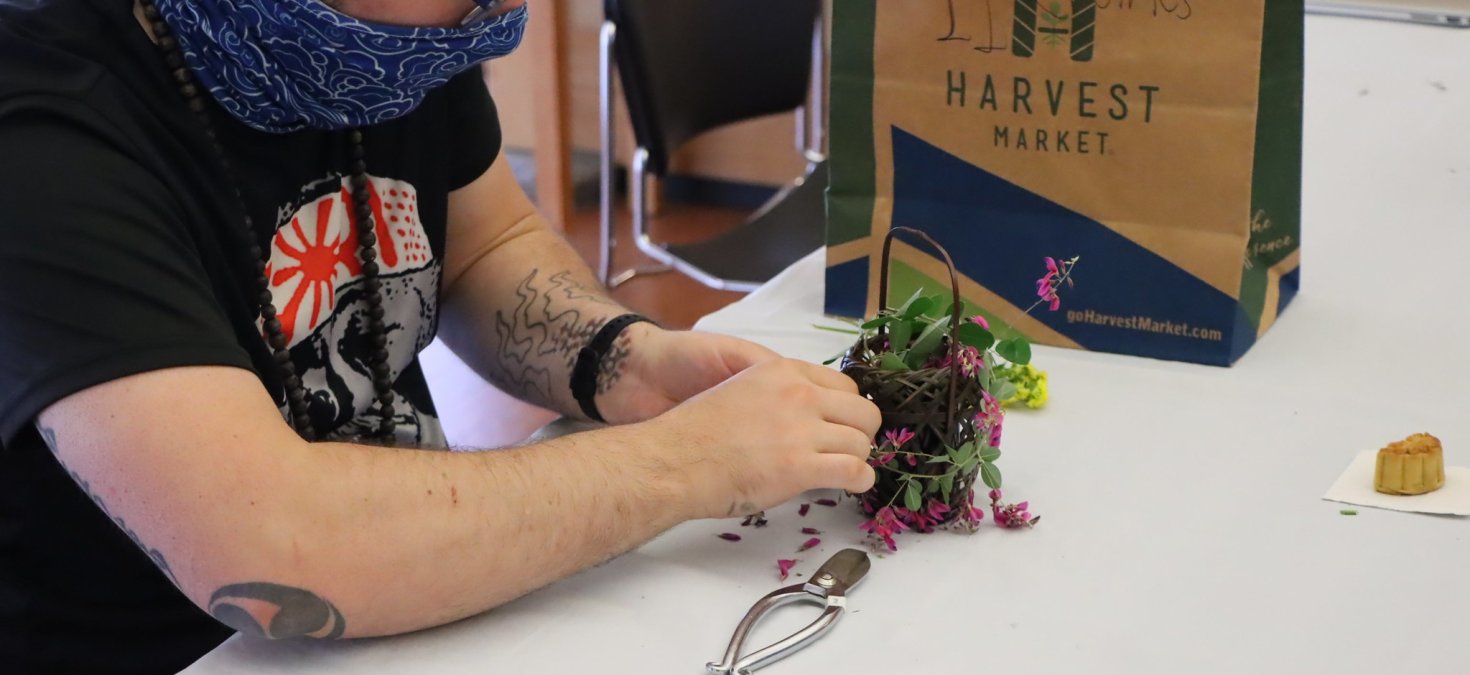The Crooked Path

By Paul Duarte-Noe, Japan House Intern and Senior in Cinema and Media Studies
I love the arts of Zen, which is why I wanted to be a part of Japan House. I’m a martial artist and, like many practitioners of Japanese sword arts, I look to the wisdom of the great sword saint, Miyamoto Musashi. After perfecting the art of the sword, he retired to a cave where he wrote, “If you know the way broadly, you will see it in everything.” When I look from this perspective, I see that the way of the sword is the way of tea, which is the way of arranging flowers, which is the way of calligraphy, which is the way of walking through a garden. They are all physical counterparts to the mental activities of Zen. I like this idea, that anything can be Zen practice when approached in the right way. In the martial arts, we practice Zen through the cultivation of five mental states: Shoshin – Beginner’s Mind, Mushin – No Mind, Zanshin – Lingering Mind, Fudoshin – Immovable Mind, and Senshin – Enlightened Mind.

On the first day of the internship, Darin Sensei introduced us to a small, crooked path of stones through the garden and taught us how to walk the path, a preparatory process which I saw as a catalyst for these five states of Zen.
The crooked path is Shoshin – The Beginner’s Mind. It is the beginning. Before entering the threshold, we were instructed to bow, a gesture of humility and mental priming for the experience that would follow. The gate marks a sacred space and entering through it is like being conceived into a new world. To evoke the beginner’s mind, thoughts of the past and the future are discarded at the gate, and you enter the garden like you first entered the world, with a mind that's clear and attentive. Rather than carrying preconceptions and mental clutter, you arrive with an open-minded sense of unknowing, a blank space for possibilities. Having cultivated a beginner’s mind, we can be more open to experience.

The crooked path is Mushin – No Mind. It is submission resulting from a mind empty of expectations. Darin Sensei next explained the irregularity in the spacing of the steppingstones and their placement within the environment as an intentional design strategy to disrupt a swift and thoughtless gait. They serve as a speed bump, to slow one down to a tranquil pace, allowing the mind to still itself and surrender control to its surroundings. When there is no rush and no goal, No Mind emerges, and one realizes that the path is music. It rises and falls in elevation and twists and straightens according to its own will. A song ebbs and flows and the listener follows it unquestioningly. Those on the garden path submit to its direction and flow with the stream of stones. Like music, the goal isn't to come to the end. If it was, every song would be one note long, to get to the goal more efficiently. The path is the same. Instead of looking ahead at the exit, you look down at your feet, at the place you are now, carefully stepping where the stones direct you. Along with the climb and decent, curves right and left, obstructions in the path force the body to move in specific ways, to bow or contort. With a flexible mind, one may be inclined to bow beneath a low hanging branch on the path, to flow through the space, rather than plow through it rigidly. These impediments to automatic motion draw attention to the present, to the immediate space and time one is inhabiting. Having cultivated No Mind, we can be more accepting.

The crooked path is Zanshin – The Lingering Mind. It is variation and change. Like everything, the path is in a state of flux. This unpredictability causes one to widen their scope, mentally scanning the environment. When explaining the art of chabana, Gunji Sensei emphasized the concept of negative space, drawing attention to the space between the subjects of the arrangement. In the same way, my attention expanded outward as I walked through the garden, focusing not just on a single point but taking in the environment as a whole. At first, my senses were passively taking in input, in an indiscriminate, muddled haze. After a moment, as my focus sharpened, I perceived the crisp trickling of the water in the tsukubai. After that, the rustling of leaves became clear, followed by crickets and various insects chirping complimentary tunes, birds of one variety then another, then expanding outward to the various mechanical hums of cars, lawn mowers, stroller wheels, and sirens in the mundane world beyond the garden gates, weaving a tapestry of auditory patterns that spread wide as I broadened my attention.

Having cultivated a lingering mind, we can be more aware.
The crooked path is Fudoshin – The Immovable Mind. It is a complete and unshakable state of absorption. In describing the tea ceremony, Gunji-Ballsrud Sensei explained the importance of intentionality. In the way of tea, each movement is performed with a slow and steady sense of purpose resulting in a presence of mind, which is stable and unwavering. In English, it’s called equanimity. An anxious or distracted mind is toppled by every unpredictable occurrence, flinching and off balance. On the garden path, after having first achieved the alert state of Zanshin, a sudden sound or movement like a chipmunk scurrying quickly across the path, doesn't cause one’s mind to waver. Whatever external forces push against us, our minds are solid.

Having cultivated an immovable mind, we can respond to life calmly and intentionally.
Ultimately, the crooked path is Senshin – The Enlightened Mind. It is a microcosm. In the garden, Mercedes Sensei spoke about maintaining balance by choosing which plants to remove and which to allow to remain. Each element is in harmony, collaborating with every other. One plant holds the soil to prevent erosion, and in return, the soil sustains the plants. I realized that effort and artistry are required to maintain this unnatural, natural space. This model of synthesis reflects the highest realization in Zen. It’s a representation of Inyo, The Cosmic Dual forces of dark and light, mundane and transcendent. The deluded mind perceives in the extremes of these cosmic opposites, a conflict with one another. This type of black-and-white thinking has led to generalizations and prejudices of all kinds, ignoring the nuances of an infinitely complex and interrelated world. But the deep structure of wisdom, which Zen points to, suggests a higher perspective, a unity of opposites, in which the two aren’t distinct, but inseparably intermingling and collaborating. Instead of clashing, they are continuously harmonizing. So, the path isn’t sterile, uniform, and contrived. Nor is it nature in a pure, unmodified state. It’s an anomalous figure between artificial order and natural chaos. Walking the path pushes us to see the liminal state between extremes, the unity of opposites, to cultivate a wise and compassionate spirit.
I recently interviewed the other interns and asked them to describe something valuable that they’ve learned from their experiences here. With answers like, “…the value of the present moment” as well as “intentionality with my actions” and “to slow down and be more aware” it’s obvious that, while what we do here is important, its really learning how to think about what we do that is the lesson. For me, walking a path with care, attention, and reverence is analogous to life, so I try to maintain the same respect and sincerity every time I step outside the garden of Japan House and take it with me into the world.

The wonderful Fall 2021 Japan House Interns! (Left to right: Ziqi Yuan, Trevor Graham, Tara Leininger, Grant Allen, Jacky Vargas, Caleb Apperson, and Paul Duarte-Noe)